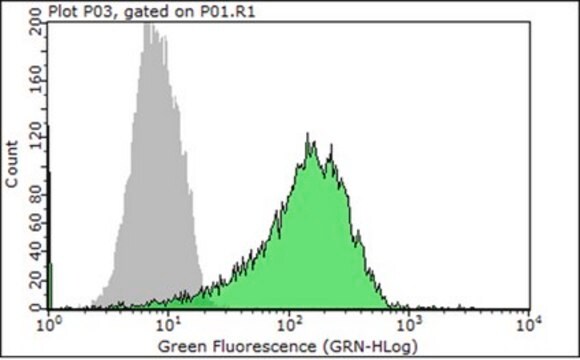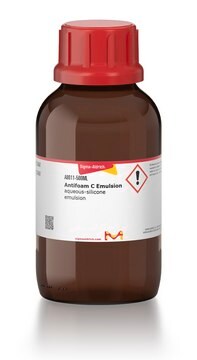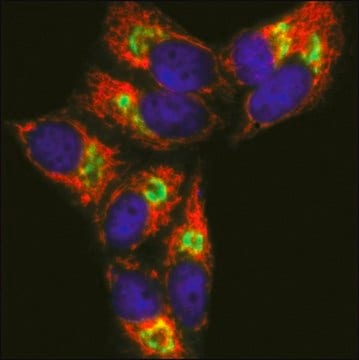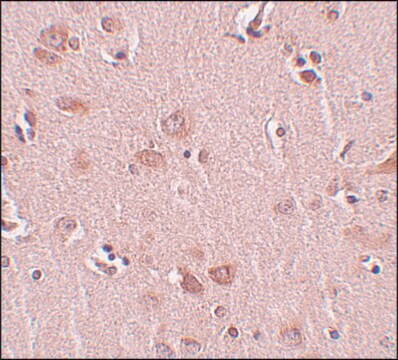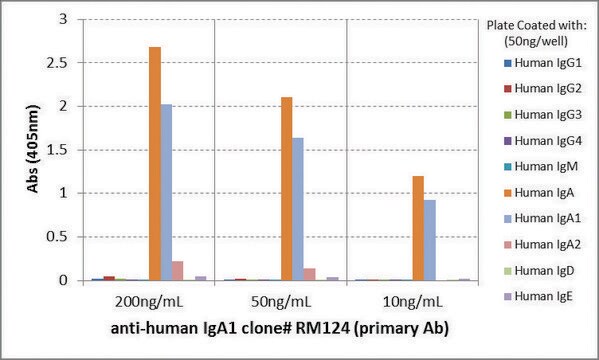MAB2060
Anti-Integrin β4 Antibody, clone ASC-9
clone ASC-9, Chemicon®, from mouse
Synonyme(s) :
CD104
About This Item
Produits recommandés
Source biologique
mouse
Niveau de qualité
Forme d'anticorps
purified immunoglobulin
Type de produit anticorps
primary antibodies
Clone
ASC-9, monoclonal
Espèces réactives
human
Fabricant/nom de marque
Chemicon®
Technique(s)
flow cytometry: suitable
immunohistochemistry: suitable
immunoprecipitation (IP): suitable
Isotype
IgG2aκ
Numéro d'accès NCBI
Numéro d'accès UniProt
Conditions d'expédition
wet ice
Modification post-traductionnelle de la cible
unmodified
Informations sur le gène
human ... ITGB4(3691)
Spécificité
Immunogène
Application
EHS laminin, but not to laminin GD-2 peptide, type IV collagen or fibronectin. Does not inhibit SKOV-3 cell adhesion to laminin, fibronectin or type IV collagen.
Immunohistochemistry: on acetone-fixed frozen human epithelial tissues including tongue, foreskin and ovary. Not for use on formalin-fixed tissue.
Flow cytometry: stains human squamous cell carcinoma (SCC9), ovarian carcinoma (SKOV-3) and umbilical vein endothelium (HUVEC). Stains RKO or K562 cells transfected for CD104 expression. Does not stain monocytes, neutrophils, lymphocytes, T cells, B cells or platelets.
Immunoprecipitation: precipitates PAGE bands of 66, 76, 120, 135 and 200kDa (reduced) or 66, 110, 125, 130 and 190kDa (non-reduced) from surface-biotinylated SCC9 cells.
Working dilutions must be determined by end user.
Cell Structure
Integrins
Forme physique
Stockage et stabilité
Autres remarques
Informations légales
Clause de non-responsabilité
Vous ne trouvez pas le bon produit ?
Essayez notre Outil de sélection de produits.
Code de la classe de stockage
10 - Combustible liquids
Classe de danger pour l'eau (WGK)
WGK 2
Point d'éclair (°F)
Not applicable
Point d'éclair (°C)
Not applicable
Certificats d'analyse (COA)
Recherchez un Certificats d'analyse (COA) en saisissant le numéro de lot du produit. Les numéros de lot figurent sur l'étiquette du produit après les mots "Lot" ou "Batch".
Déjà en possession de ce produit ?
Retrouvez la documentation relative aux produits que vous avez récemment achetés dans la Bibliothèque de documents.
Notre équipe de scientifiques dispose d'une expérience dans tous les secteurs de la recherche, notamment en sciences de la vie, science des matériaux, synthèse chimique, chromatographie, analyse et dans de nombreux autres domaines..
Contacter notre Service technique
